Leave us your email address and be the first to receive a notification when Team posts a new blog.
As stated, re:Invent is back. Normally this would be a full week of tech, covering ground in most of the Las Vegas hotels. But as almost everything, this year is different. Like all other conferences held this year AWS decided to do a full virtual event, but they stepped it up a notch. They decided on a free event that covers 3 weeks. While the first is something most vendors did this year, the second is not. The reasoning behind this is that each session can be held in multiple time zones, without much overlap, so you can pick whatever suits your needs.
AWS Night Live
As always Monday night hosts the pre-party: AWS Night Live. During this 'keynote' the first announcement is made public, which is a gimmick. They've done a DeepComposer (anyone still playing with that?) last year, AWS Firecracker before that and they keep on amazing me.
macOs on EC2?
This year's announcement is that you can now order a macOS instance on EC2. Being a mac-fan myself, I was curious about the OS and hardware types, as Apple just announced they will be migrating to their M1 chipset, which is basically Apple's IP.
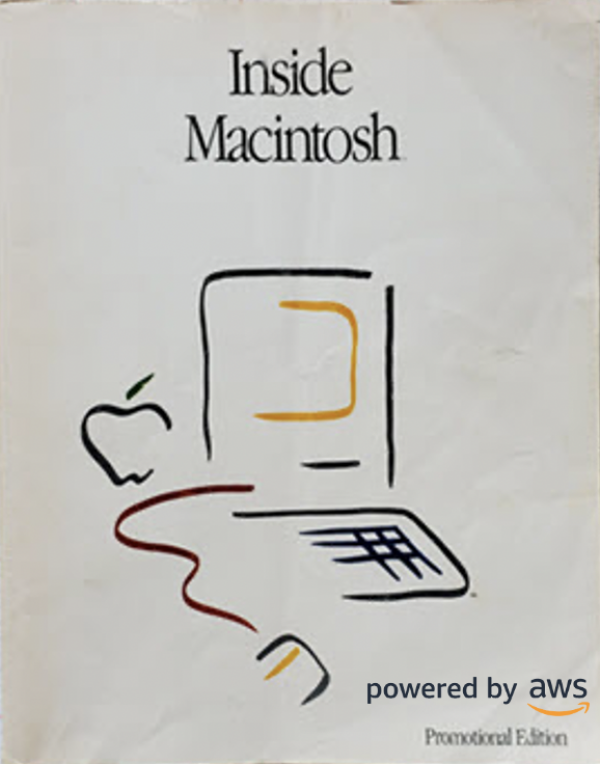
Powered by Mac mini hardware and the AWS Nitro System, you can use Amazon EC2 Mac instances to build, test, package and sign Xcode applications for the Apple platform. This includes macOS, iOS, iPadOS, tvOS, watchOS and Safari. The instances feature an 8th generation, 6-core Intel Core i7 (Coffee Lake) processor. There’s 32 GiB of memory and access to other AWS services including Amazon Elastic Block Store (EBS) and Amazon Simple Storage Service (S3).
On the networking side, the instances run in a Virtual Private Cloud (VPC) and include ENA networking with up to 10 Gbps of throughput. With EBS-Optimization, and the ability to deliver up to 55.000 IOPS (16KB block size) and 8 Gbps of throughput for data transfer.
Mac instances run macOS 10.14 (Mojave) or 10.15 (Catalina) and can be accessed via command line (SSH) or remote desktop (VNC).
Unfortunately they don't run the latest macOS BigSur yet, but hopefully that's just a brief update away!
The best thing about these virtual conferences is that it's actual live. In other years, everything is pre-recorded, just to make sure everything works as flawless as possible during the moment of streaming. Not this year, and not at re:Invent. The complete keynote was live making it more fun to watch. Some people are present in a Chime session (which is basically Zoom or Teams, but then brought to you by AWS).
Keynote of Andy Jassy, CEO of Amazon Web Services
Every year the real opening of the event is reserved for Andy Jassy. Andy has been CEO of AWS since 2016 and this is his fourth time speaking, and it's my third time watching him shine 'live'.
The downside from watching these sessions from home, is that there is always something to do. During the opening an artist called Zack Person played live. Which normally annoys me, since it's stretching my attention deficit disorder, but now it gave me some time to wrap up some sessions with my colleagues before attending the keynote. Let's just say it was some good background music.
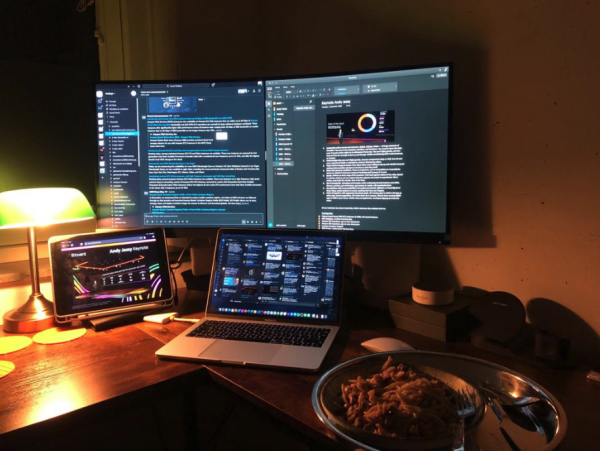
Normally during conferences in this era, I note/blog on one screen, follow a live stream on the other and I use a third screen for following the reactions on twitter about the session presented. This time, since it was during dinner, I also juggled a plate of pasta. I found myself wondering: "This is what it must be like when a session is fully booked and you need to watch it in an over-flow room". Bonus points for the capturing that feeling AWS!
During the keynote of Andy, you can immediately see where he wants to go. It follows a certain flow, which is usually from the state of cloud, to some advice to c-levels and builders to announcements in compute, data stores, machine learning and 'the edge'.
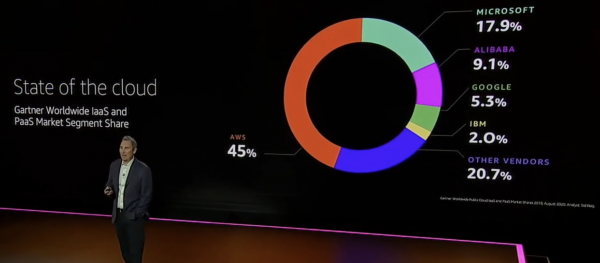
This year's 8 topics are somewhat of a repeat of last year, but still very valid in today's modern world.
1. Leaderships will to invent and reinvent
You have to be maniacal, relentless, and tenacious. You need to have the data, even if people inside might try to obfuscate it from you. You can’t fight gravity, and you have to have the courage to pick up and change. Netflix cannibalizing DVD rental business, or Amazon.
2. Acknowledge that you can’t fight gravity
How did Amazon serve customers? Build a marketplace, invite third-party sellers. You can do this in a similar way.
3. Talent that’s hungry to invent
Nowadays you see new talent, who are often more willing to rip up and rebuild. While existing talents are reluctant to do that to things that they have built. Why is that? You need talent with an appetite for curiosity and invent new ways of doing things (have you seen our job openings?).
4. Solve real customer problems
You should focus on customers, not on competitors or on products. Invent on behalf of customers instead of building stuff because it is cool.
5. Speed
This matters at each business stage. Push back against claims that are too risky. Speed is a choice; make it, set up a culture that acknowledges urgency and is willing to experiment. Not a switch, you must build the muscle. Now is the time.
This is something we see within RedLogic as well. Since the start of our AWS journey we are working towards getting the right speed that fits our customers and our needs.
6. Don’t Complexify
Managing technologies while making big transformations and shifts can be hard. That's why you need to choose a partner, get momentum, get success and results and add complexity later.
7. Use platform with most capabilities & broadest set of tools
All of these things enable builders to create anything that they can imagine.
8. Pull it all together with aggressive top-down goals
General Electric moved all of their apps to AWS in 30 days, which seemed aggressive, but their CIO made them do it anyway. They are now almost done moving 9.000 apps to AWS in just 2 years. Of course AWS pulled out their pet project, with a similar story at Capital One. It must be nice to avoid just dipping a toe into the water.
As you can read, none of these topics are technical, but all of them are about leadership. It is about building a business that outlasts all of us.
Now, gimme announcements!
After setting the scene Andy went on to the announcements in the order I earlier described. I won't go into detail, since there were around 30, so I'll highlight my personal top 5.
1. Amazon here, Amazon there, Amazon Anywhere!
During the keynote Andy announced Amazon ECS Anywhere and Amazon EKS Anywhere. These allow you to run popular services ECS and EKS in your own data center.

Available in 2021, ECS Anywhere will allow customers to deploy native Amazon ECS tasks in any environment. This will include the traditional AWS managed infrastructure, as well as customer-managed infrastructure. All this without compromising on the value of leveraging a fully AWS managed, easy to use, control plane that’s running in the cloud, and always up to date.
EKS Anywhere brings a consistent AWS management experience to your data center, building on the strengths of Amazon EKS Distro (the same Kubernetes that powers EKS on AWS.) EKS Anywhere enables you to automate cluster management, reduce support costs, and eliminate the redundant effort of using multiple open source or 3rd party tools for operating Kubernetes clusters. In addition, you can leverage the EKS console to view all your Kubernetes clusters, running anywhere.
2. Cheap, cheaper, cheapest?
AWS isn't the most expensive cloud available today. But the way they seem to find price deductions always amazes me.
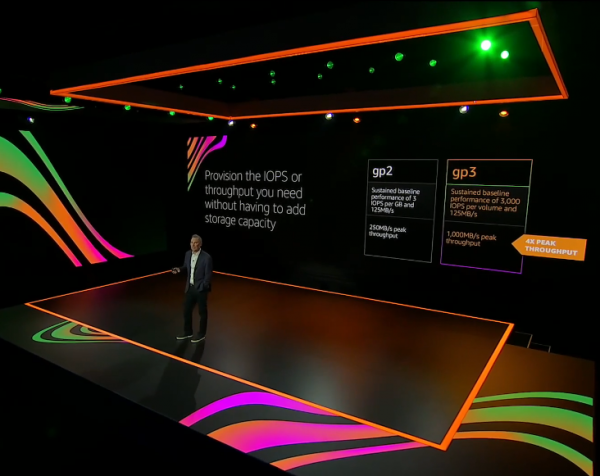
Even this year, with the announcement of GP3 datastores, which makes cloud volumes about 20% cheaper, with roughly 3 times the added amount of IOPS (now around 10k). With EBS, customers can choose from multiple volume types based on the unique needs of their applications. This is a gamechanger: you should really start using this today, because, let's face it: cloud is all about pay-per-use. And if you use something this much and all the time it is storage. Storage is always one of the biggest topics on your AWS bill, since it's always in use. If you’re currently using gp2, you can easily migrate your EBS volumes to gp3, using Amazon EBS Elastic Volumes, an existing feature of Amazon EBS. Elastic Volumes allows you to modify the volume type, IOPS, and throughput of your existing EBS volumes without interrupting your Amazon EC2 instances.
3. Those pesky licenses
Last year some vendors, like Microsoft and Oracle, decided to change their licensing model. This made it harder to run your databases within a different vendors cloud. AWS is all about Database Freedom. Within RedLogic we see it with the Oracle licensing on VMware as well. You need dedicated licenses, limiting your availability. AWS has a solution for this. Developers might say they prefer to run PostgreSQL to proprietary alternatives (and they do), but enterprises have spent years building data models in Microsoft SQL Server or Oracle. Change feels hard. Why buy a license? This is something Andy has spoken about quite a lot of times during previous re:Invents. I still find it amusing to see how they are thinking about the freedom of database choices.

Babelfish for Amazon Aurora PostgreSQL will let you translate (what's in a name) SQL queries to a Postgres database. Babelfish adds an endpoint to PostgreSQL that understands the SQL Server wire protocol Tabular Data Stream (TDS), as well as commonly used T-SQL commands used by SQL Server. Support for T-SQL includes elements such as the SQL dialect, cursors, catalog views, data types, triggers, stored procedures and functions. With Babelfish enabled, customers don’t have to swap out database drivers or take on the significant effort of rewriting and verifying all of your applications’ database requests. And the best of this, it is completely opensourced!
Hopefully this will come to RDS on VMware as well.
4. Create gurus!
Last year, AWS announced CodeGuru which uses machine learning to identify critical issues, security vulnerabilities, and hard-to-find bugs during application development to improve code quality. This was fully intended for creating better code. But in a DevOps world, there is also the OPS part. So it makes sense to look into this part of the day2 as well. That's why they announced AWS DevOps Guru.
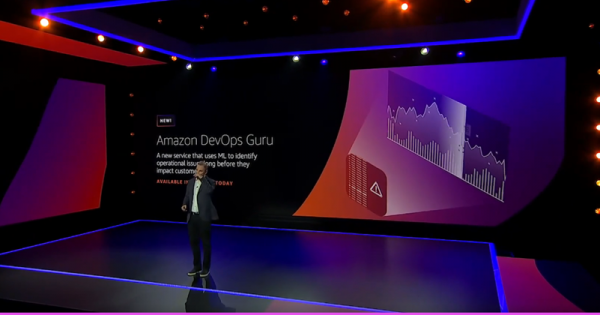
Amazon DevOps Guru is a fully managed operations service that makes it easy for developers and operators to improve application availability by automatically detecting operational issues and recommending fixes. As applications become more distributed and complex, operators need more automated practices to maintain application availability and reduce the time and effort spent on detecting, debugging, and resolving operational issues. Application downtime, for example, as caused by unbalanced container clusters, misconfiguration, or resource depletion, can result in significant revenue loss to an enterprise. DevOps Guru automatically detects operational problems, details the possible causes, and recommends remediation actions. DevOps Guru provides customers with a single console experience to search and visualize operational data by integrating data across multiple sources supporting Amazon CloudWatch, AWS Config, AWS CloudTrail and AWS CloudFormation.
What's next AWS? Will you kill Atlassian by providing a total service desk solution? Yes, please!
5. What about the edge?
Moving workload from on-premises to the cloud using VMware Cloud on AWS. AWS has a strong partnership with VMware. This is why we, from RedLogic, acquired the Master Competency for VMConAWS last year and pursuing to develop this technology in workshops for our customers. AWS itself has changed it's view on this as well, being the cloud innovators they are. Redefining and asking what hybrid is all about. It was an early hype, but what does on-premises mean? A restaurant, a field? Customers want a hybrid offering that uses the same tools, APIs, and so forth as their cloud services.
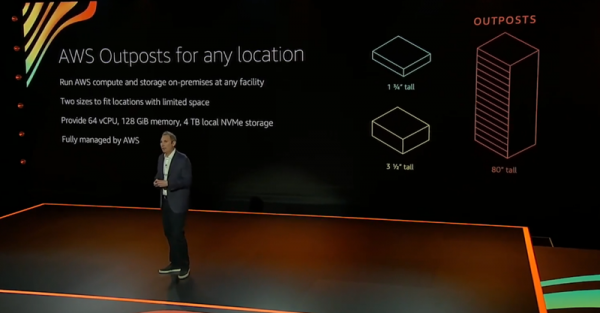
Last year they announced AWS Outposts. An on-premises offering in which you can host your own AWS environment from your own data center, using hardware delivered and maintained by AWS. This year they have refactored this offering into a smaller service: an 1U and 2U server that will provide local compute and networking services to edge locations that have limited space or smaller capacity requirements.
More to come
That's it for now. Over the next couple of weeks, AWS will announce other new features. Perhaps we can do a recap session at the end of re:Invent like the one I hosted last year, which was a blast to do, but we'll see how this pandemic thing works out.
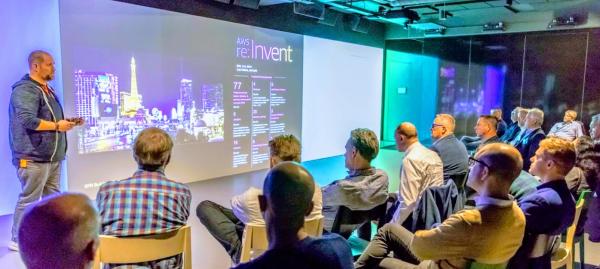
Questions, Remarks & Comments
If you have any questions and need more clarification, we are more than happy to dig deeper. Any comments are also appreciated. You can either post it online or send it directly to the author, it’s your choice.





 LinkedIn
LinkedIn
 Twitter
Twitter